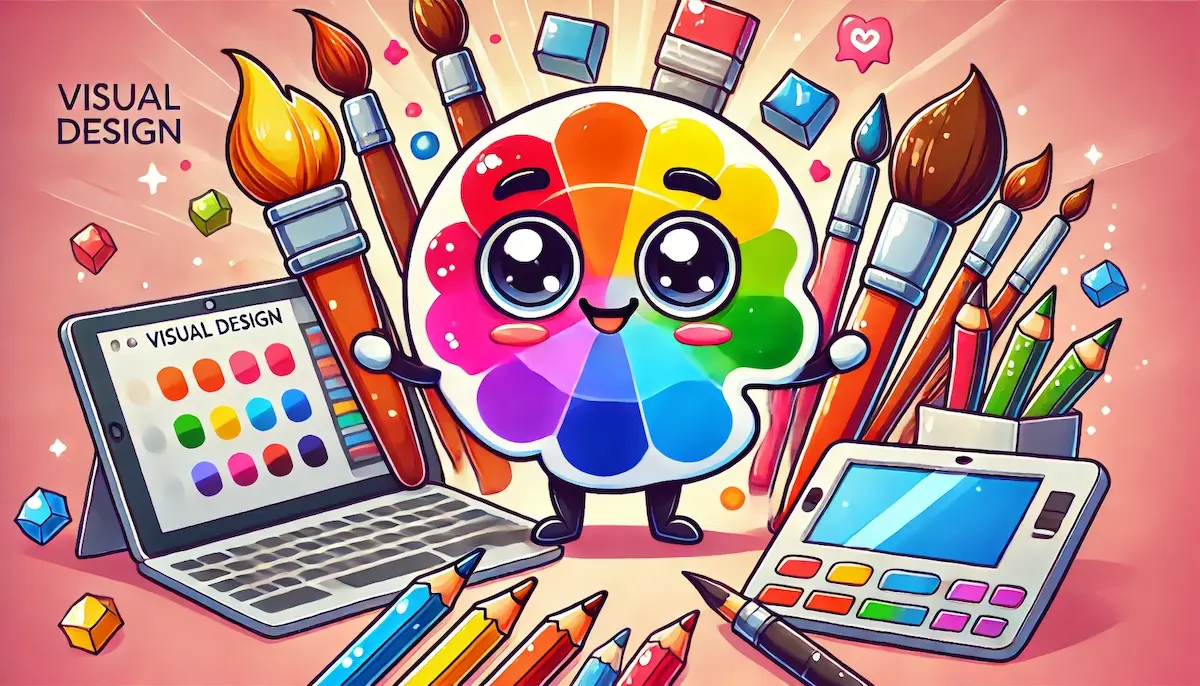Visual design is a critical aspect of creating compelling and effective digital products. It involves the use of imagery, color, typography, and layout to enhance the aesthetic appeal and usability of a product. Visual design not only makes a product more attractive but also improves user experience by guiding users and making interactions intuitive.
What is Visual Design?
Visual design focuses on the aesthetics of a product and its related materials by strategically implementing images, colors, fonts, and other elements. The goal is to create a visually pleasing interface that facilitates user interaction and effectively communicates the brand’s message and values.
The Importance of Visual Design
Visual design plays a crucial role for several reasons:
- First Impressions: The visual appeal of a product often forms the user’s first impression, influencing their perception and engagement.
- Usability: Good visual design enhances usability by organizing information clearly and guiding users through the interface intuitively.
- Brand Identity: Consistent visual design strengthens brand identity and helps differentiate the product from competitors.
- User Engagement: Attractive and well-designed interfaces can increase user engagement and satisfaction, encouraging longer interactions and return visits.
- Accessibility: Thoughtful visual design can improve accessibility, making the product usable for a wider range of people, including those with disabilities.
Key Principles of Visual Design
Several key principles guide effective visual design:
- Balance: Achieving visual balance involves distributing elements evenly across the design to create a sense of stability. This can be symmetrical or asymmetrical.
- Contrast: Using contrasting colors, shapes, and sizes to highlight important elements and create visual interest.
- Hierarchy: Establishing a clear hierarchy helps users navigate the interface by indicating the importance of different elements.
- Alignment: Proper alignment of elements creates a tidy and organized appearance, making the design more coherent.
- Proximity: Grouping related items together and separating unrelated items helps users quickly identify and understand the content.
- Repetition: Repeating visual elements, such as colors and shapes, to create consistency and reinforce the overall design.
- White Space: Also known as negative space, white space refers to the empty areas around elements that help reduce clutter and improve readability.
Components of Visual Design
Visual design is composed of several elements, including:
- Color: The use of color can evoke emotions, indicate actions, and create visual harmony. A well-defined color palette ensures consistency across the product.
- Typography: Choosing the right fonts and setting them appropriately is crucial for readability and conveying the desired tone. This includes font size, weight, spacing, and alignment.
- Images and Graphics: High-quality images, icons, and illustrations enhance the visual appeal and can provide context or information at a glance.
- Layout and Grid Systems: Organizing content in a structured layout using grid systems ensures a clean, balanced, and easily navigable interface.
- Icons and Buttons: These elements should be easily recognizable and consistent in style, providing intuitive cues for user interactions.
The Process of Visual Design
Creating effective visual design involves several steps:
- Research and Inspiration: Understand the target audience, brand identity, and design trends. Gather inspiration from other designs and related industries.
- Wireframing: Create low-fidelity wireframes to outline the basic structure and layout of the interface without focusing on details.
- Mockups: Develop high-fidelity mockups that include detailed visual elements like colors, typography, and images. This stage brings the wireframe to life.
- Prototyping: Build interactive prototypes to test the visual design in real-world scenarios. This helps identify usability issues and gather feedback.
- Feedback and Iteration: Collect feedback from stakeholders and users, and iterate on the design to refine and improve it.
- Implementation: Work closely with developers to ensure the visual design is accurately translated into the final product.
Tools for Visual Design
Several tools can assist in creating effective visual designs:
- Adobe Creative Cloud: A suite of applications including Photoshop, Illustrator, and XD for creating and prototyping designs.
- Sketch: A popular design tool for creating high-fidelity interfaces and prototypes.
- Figma: A collaborative interface design tool that allows real-time collaboration and prototyping.
- InVision: A platform for prototyping, collaboration, and workflow management in design projects.
- Canva: A user-friendly tool for creating graphics, presentations, and other visual content.
Conclusion
Visual design is essential for creating attractive, usable, and engaging digital products. By following key principles and leveraging the right tools, designers can create interfaces that not only look good but also provide a seamless and enjoyable user experience.
Blockfine thanks you for reading and hopes you found this article helpful.
